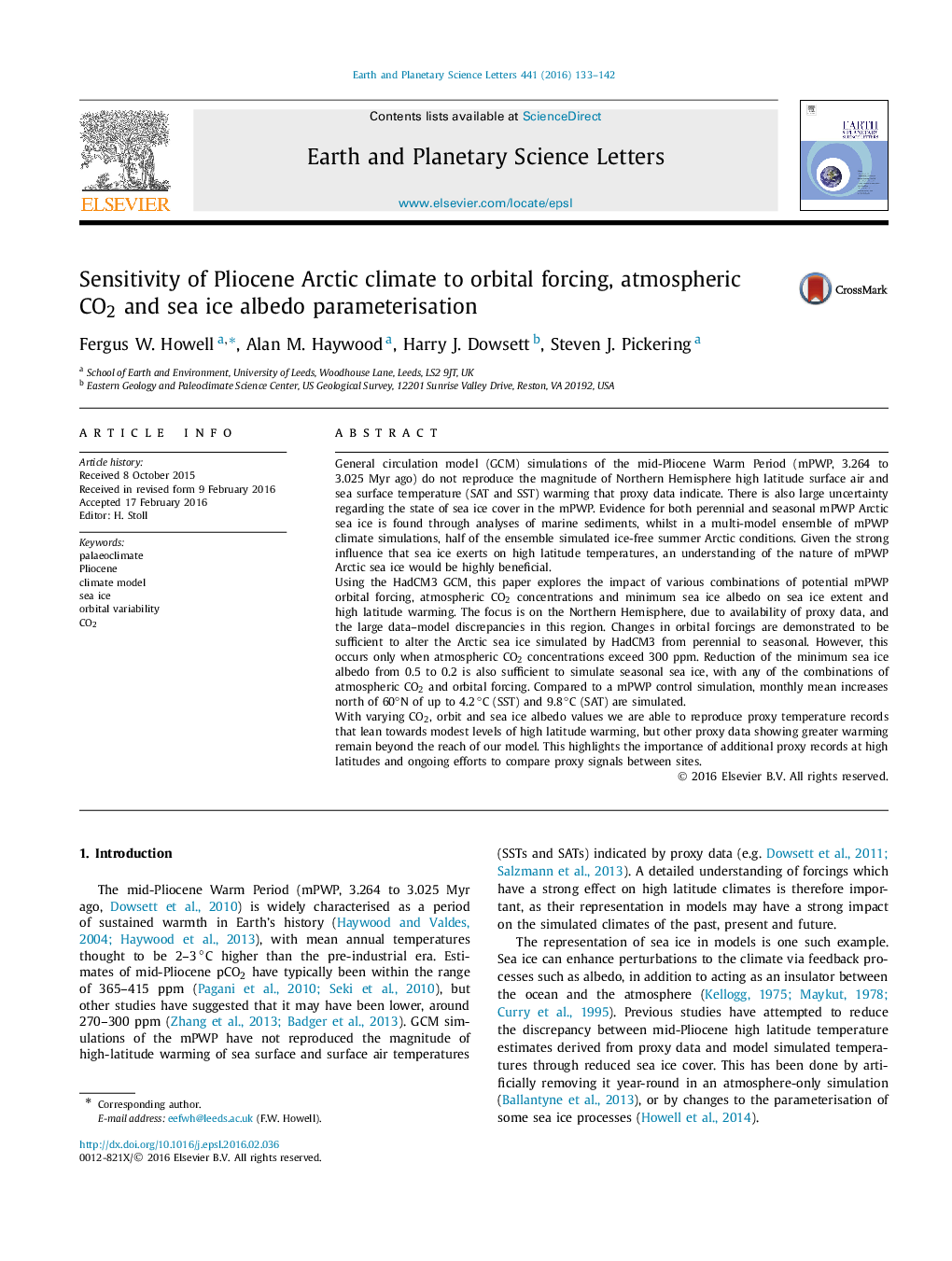| کد مقاله | کد نشریه | سال انتشار | مقاله انگلیسی | نسخه تمام متن |
|---|---|---|---|---|
| 6427522 | 1634715 | 2016 | 10 صفحه PDF | دانلود رایگان |

- We run 30 simulations of the mid-Pliocene, altering orbit, CO2 and sea ice albedo.
- Changes in just one of these crucial to perennial or seasonal sea ice.
- Warming from sea ice reduction does not resolve mid-Pliocene data-model discrepancy.
- Greater spatial coverage and increased understanding of proxy signals is crucial.
General circulation model (GCM) simulations of the mid-Pliocene Warm Period (mPWP, 3.264 to 3.025 Myr ago) do not reproduce the magnitude of Northern Hemisphere high latitude surface air and sea surface temperature (SAT and SST) warming that proxy data indicate. There is also large uncertainty regarding the state of sea ice cover in the mPWP. Evidence for both perennial and seasonal mPWP Arctic sea ice is found through analyses of marine sediments, whilst in a multi-model ensemble of mPWP climate simulations, half of the ensemble simulated ice-free summer Arctic conditions. Given the strong influence that sea ice exerts on high latitude temperatures, an understanding of the nature of mPWP Arctic sea ice would be highly beneficial.Using the HadCM3 GCM, this paper explores the impact of various combinations of potential mPWP orbital forcing, atmospheric CO2 concentrations and minimum sea ice albedo on sea ice extent and high latitude warming. The focus is on the Northern Hemisphere, due to availability of proxy data, and the large data-model discrepancies in this region. Changes in orbital forcings are demonstrated to be sufficient to alter the Arctic sea ice simulated by HadCM3 from perennial to seasonal. However, this occurs only when atmospheric CO2 concentrations exceed 300 ppm. Reduction of the minimum sea ice albedo from 0.5 to 0.2 is also sufficient to simulate seasonal sea ice, with any of the combinations of atmospheric CO2 and orbital forcing. Compared to a mPWP control simulation, monthly mean increases north of 60°N of up to 4.2â°C (SST) and 9.8â°C (SAT) are simulated.With varying CO2, orbit and sea ice albedo values we are able to reproduce proxy temperature records that lean towards modest levels of high latitude warming, but other proxy data showing greater warming remain beyond the reach of our model. This highlights the importance of additional proxy records at high latitudes and ongoing efforts to compare proxy signals between sites.
Journal: Earth and Planetary Science Letters - Volume 441, 1 May 2016, Pages 133-142